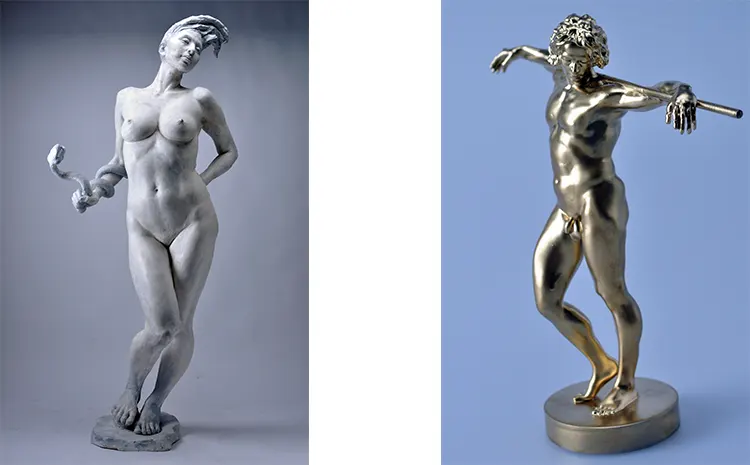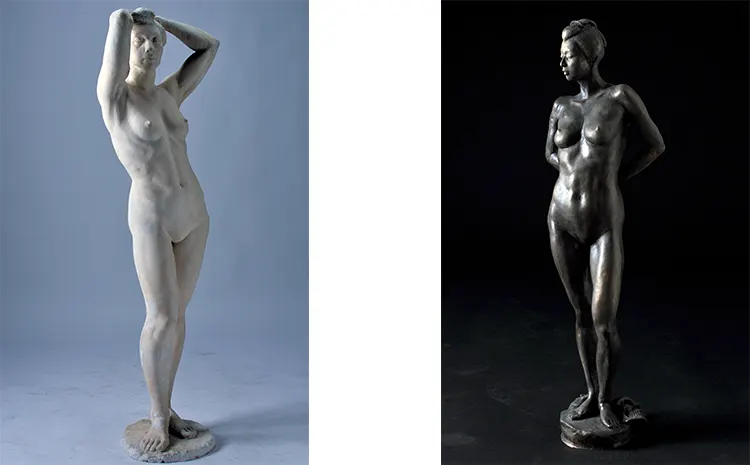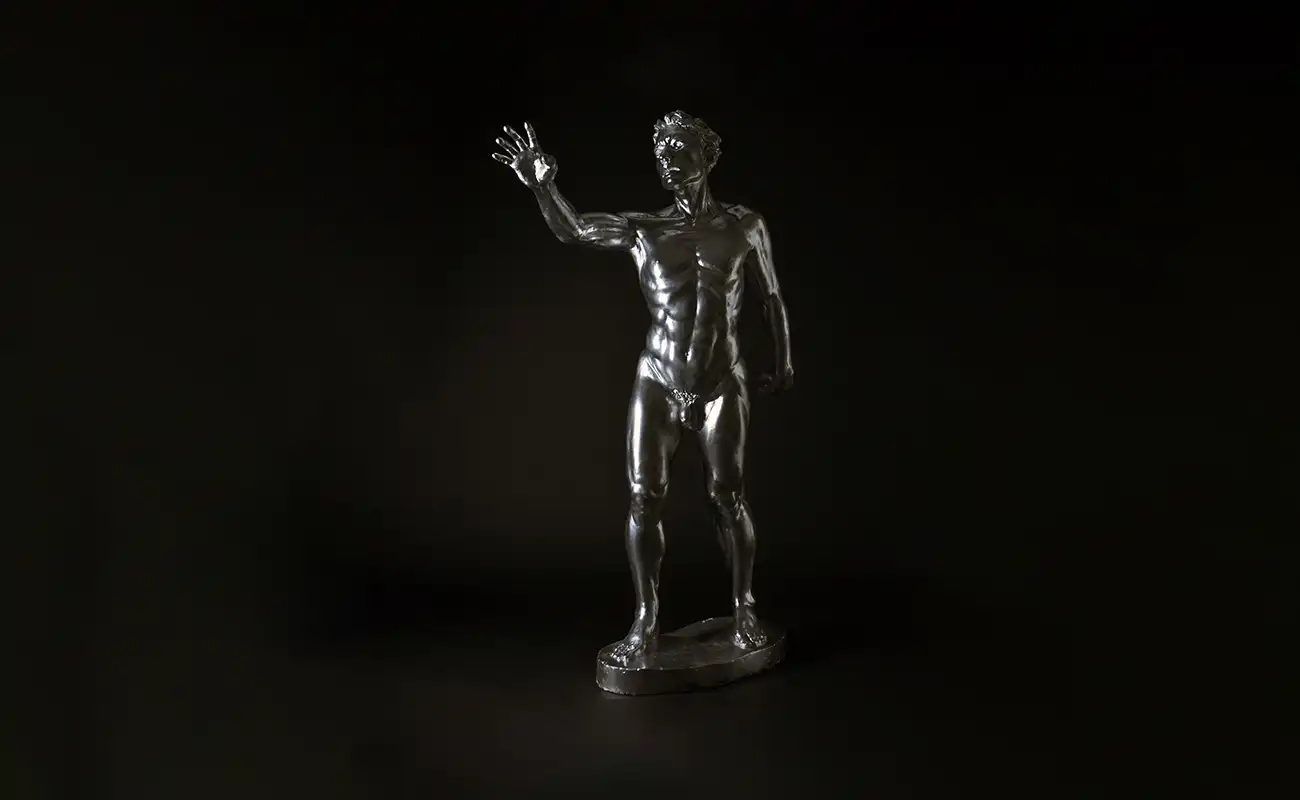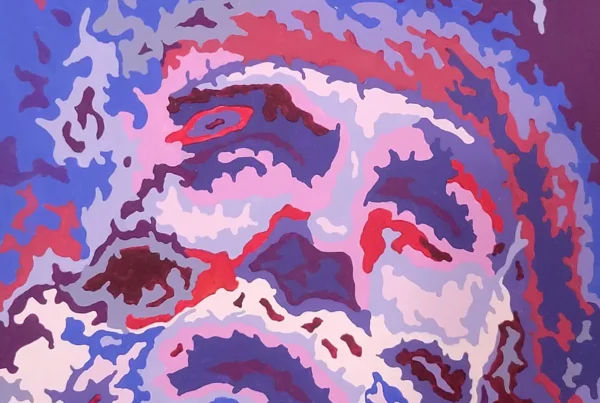“Art has always been my sole anchor, a sentiment that remains unchanged from then to now.”
A Journey through Clay: Hiro Kiyoshima’s Figurative Narratives
Hiro Kiyoshima, a Japan-based sculptor, translates the profound dramas of humanity into tangible form through his figurative sculptures. These narratives are an amalgamation of Kiyoshima’s personal experiences and the emotions he discerns from others’ actions. The artist seeks to communicate the spectrum of human experiences, from joy and sadness to contradictions and conflicts, to those who encounter his works. His artistic journey finds its roots in his childhood where isolation led him to seek comfort and self-expression through clay.
During his youth, Kiyoshima found solace in crafting figures and weaving stories, creating a world that continues to deeply influence his artistry. Although painting was his initial focus, university life exposed him to the world of sculpture, aligning seamlessly with his passion for human-centric expression. Under the mentorship of an experienced guide during these formative years, he plunged into the domain of figurative sculpture. His dedication earned him accolades and fortified his confidence in his artistic identity.

The Sculptor’s Palette: Embracing Tradition and Technology
Clay, described by Hiro as an extension of his soul, is his primary medium. The artist finds in it a pliability that allows him to breathe life into his sculptures, encapsulating the very essence of human drama. In a bid to expand his artistic vocabulary, Hiro Kiyoshima has recently ventured into three-dimensional representations using 3DCG. This exploration not only unlocks new potentials in sculptural arts but also paves a novel path for future artists.
Kiyoshima’s creative process demands a workspace featuring high ceilings, abundant natural light, and large containers for clay recycling. Essential tools such as specialized supporting rods and robust pedestals are vital for his sculpture creation. Juggling his responsibilities as an educator often poses a challenge to managing time for his craft. To optimize his workflow, the artist often immerses himself in music, adjusting the genre to suit his creative phase or mood.

Influences and Inspirations: Hiro Kiyoshima ’s Artistic Evolution
Hiro Kiyoshima’s artistic expression has been shaped by a myriad of influences. At the forefront stands his mentor, pivotal in introducing him to the world of sculpture. His parents, with their unwavering support, played a crucial role in nurturing Kiyoshima’s budding creativity. Moreover, the works of esteemed sculptors such as Rodin and Unkei have left an indelible mark on his creative psyche. Beyond the world of sculpture, the artist has found a wellspring of inspiration in novels and films, particularly those that poignantly capture the drama of human existence.
Among the myriad of works that resonate deeply with Kiyoshima are the Haniwa—terracotta clay figures emblematic of Japan’s Kofun period—and the Muchaku statue, a masterpiece by Unkei employing the “Gyokugan” technique. This unique approach has significantly influenced Kiyoshima’s creations, especially those centered on the theme of human drama.

Embracing the Digital Era: Hiro Kiyoshima’s Future Endeavors
For Hiro, clay has always been a comforting and familiar medium. Over the years, he has expanded his repertoire by integrating wax-based clays and embracing the revolutionary 3D CG representation. Recognizing the potential of the digital age, Kiyoshima has taken strides to exhibit his works in the metaverse, leveraging NFT technology. This innovative move not only addresses logistical challenges, such as shipping, but also democratizes art, making it more accessible to a global audience.
Looking ahead, the artist harbors ambitious plans. Kiyoshima envisages a Self-Portrait Series, a reflection of personal tribulations and triumphs. He is also eager to venture further into interactive three-dimensional representations using 3DCG, promising an enveloping experience for art aficionados. Amidst these pursuits, the continuous exploration and refinement of his beloved theme, “Human Drama,” remains a priority, with the efficient allocation of production time presenting a central challenge.
Amidst these pursuits, the continuous exploration and refinement of his beloved theme, ‘Human Drama,’ remains a priority, particularly as it reflects on the violation of humanity witnessed in the ongoing conflicts around the world, which he sees as a major issue. The efficient allocation of production time presents a central challenge in addressing and articulating these complex themes within his work.






